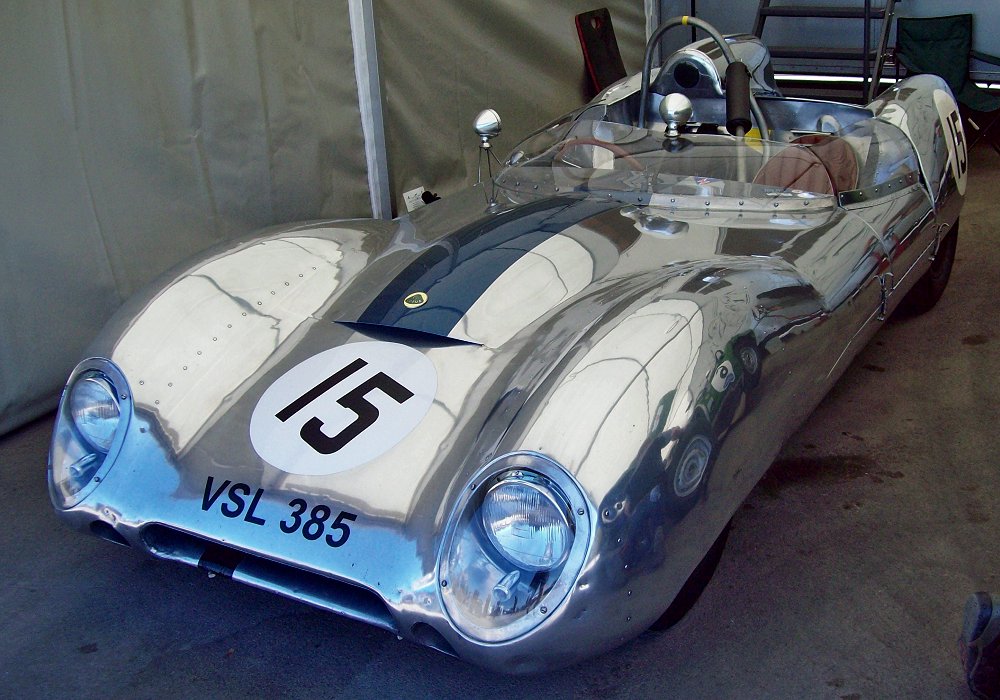Description
The Lotus Mark 15, introduced in 1958, was conceived as the natural successor to the highly successful Lotus Mk 11 and represented the pinnacle of Lotus’s front-engined sports-racing car development before the company transitioned to mid-engined designs. It was designed for competition in the 1.5- and 2.0-litre sports-car classes and incorporated lessons learned from the Mk 11 and Mk 12 while introducing a new, lower, and more compact chassis that pushed the boundaries of lightweight engineering. The Mk 15 combined Colin Chapman’s mastery of chassis design with Frank Costin’s expertise in aerodynamics to produce one of the most sophisticated front-engined sports-racers of the 1950s — elegant, efficient, and highly competitive.
The chassis of the Mk 15 followed Lotus’s established tubular spaceframe principle but was even lighter and stiffer than that of the Mk 11. Chapman refined the layout to lower the car’s centre of gravity and reduce frontal area, creating a structure that weighed only around 30 kilograms yet provided outstanding rigidity. The chassis was narrower and more compact, positioning the driver lower in the car and allowing the body to be shaped for maximum aerodynamic efficiency. This design philosophy reflected Chapman’s continual drive to minimise weight and drag while maximising strength and control — principles that would later define Lotus’s Formula One success.
Power for the Mk 15 came primarily from Coventry Climax engines, which had become the standard choice for Lotus’s competition cars. Most examples were fitted with the 1,220 cc FWE or 1,460 cc FWB all-aluminium twin-cam units, producing between 90 and 140 horsepower depending on specification. A few cars were equipped with 2.0-litre engines for higher-capacity classes, and at least one was adapted to accept a 2.5-litre Coventry Climax unit for experimental use. Given the Mk 15’s exceptionally low weight — around 450 kilograms ready to race — these engines endowed it with excellent performance. The car was capable of speeds approaching 150 mph, making it one of the fastest small-capacity sports cars of its time.
The suspension followed the tried-and-tested Lotus layout: double wishbones and coil springs at the front, and a live rear axle located by trailing arms and a Panhard rod. The setup was simple but highly effective, offering superb balance and feedback. Chapman’s focus on suspension geometry ensured that the Mk 15 handled with precision and predictability even at high speeds. Drum brakes were fitted all round, though some cars later received disc conversions as technology advanced. The steering was light, direct, and communicative — qualities that defined the Lotus driving experience and made the Mk 15 exceptionally rewarding for skilled drivers.
The bodywork, designed by Frank Costin, represented another leap forward in aerodynamic design. Built by Williams & Pritchard in lightweight aluminium, the body was lower, smoother, and narrower than that of the Mk 11. The long, pointed nose featured recessed headlamps and a small oval grille, while the rear end was tightly faired, tapering into a sleek tail that minimised turbulence. The design reduced drag and improved cooling efficiency, giving the Mk 15 a cleaner, more modern appearance compared with earlier Lotus sports-racers. The cockpit was equally minimalistic — a simple aluminium tub surrounding a fixed seat, with essential instruments and switches mounted on a plain, functional dashboard.
The Lotus Mk 15 made its competition debut during the 1958 racing season, competing in both British and international events. Although production numbers were very limited — believed to be around 10 cars — the model achieved notable success in the hands of privateers and works drivers alike. In the 1.5-litre class, it proved capable of challenging cars from Cooper, Lola, and Maserati, while its 2.0-litre variants were fast enough to trouble much larger and more powerful machinery. The car’s combination of speed, balance, and reliability made it especially effective in endurance racing, where its lightness and stability translated into consistent lap times and low mechanical strain.
The Mk 15 also served as a developmental bridge to the mid-engined era that would soon define Lotus competition cars. The experience gained with the car’s low chassis, compact packaging, and aerodynamic shaping directly influenced Chapman’s thinking for later designs such as the Lotus 17 and Type 19, both of which placed increasing emphasis on weight distribution and aerodynamic downforce. The Mk 15, in this sense, represented the end of an era — the ultimate expression of the traditional front-engined sports-racer perfected by Lotus before the company’s focus shifted entirely to mid-engined configurations.
In aesthetic terms, the Mark 15 was one of the most beautiful of all early Lotus models. Its low, fluid lines and balanced proportions reflected Costin’s aircraft-inspired design ethos, while its purposeful stance and minimal detailing gave it an understated elegance. It embodied the functional purity that characterised all of Chapman’s best work — every curve and surface serving a practical aerodynamic or structural purpose.
Today, the Lotus Mk 15 is regarded as one of the most sophisticated and desirable front-engined Lotus sports cars ever built. Its rarity, technical excellence, and historical significance make it highly prized among collectors and vintage racers. Though overshadowed in popular memory by the later mid-engined Lotus cars that dominated Formula One and sports-car racing, the Mk 15 remains a masterpiece of design and engineering — a car that distilled the essence of Chapman’s philosophy: performance achieved through ingenuity, efficiency, and the relentless pursuit of lightness.
